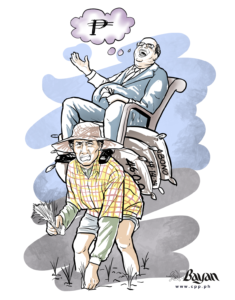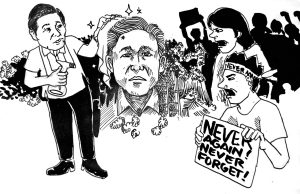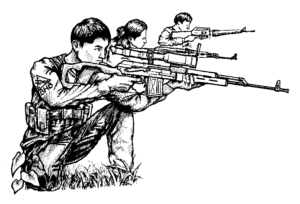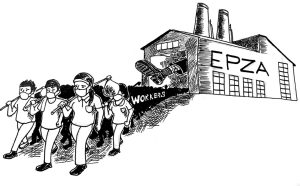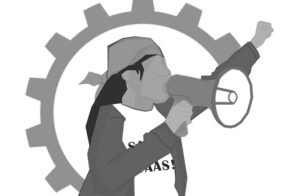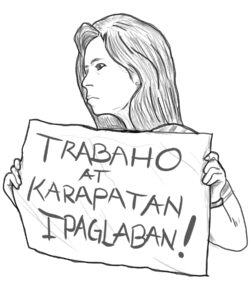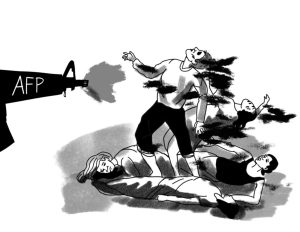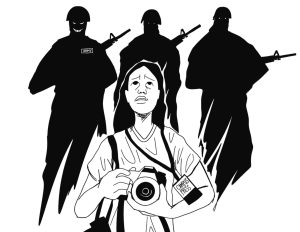Genuine land reform and the national democratic revolution


Free distribution of land to tillers or genuine land reform is the most fundamental solution, not only to the current food and agricultural crisis, but also to the bankrupt economy of the semicolonial and semifeudal system in the Philippines.
Now, more than ever, amid growing poverty of the whole people, especially of the peasant masses in the countryside, the need to advance the struggle for genuine land reform has become even more important and urgent.
This call is increasingly relevant in the face of the food crisis, and overall economic crisis. Rice prices are rising along with the 6.1% September inflation, proving clearly that Marcos’ promises of a comfortable life are futile and empty, with his programs delivering nothing but greater hardship.
High prices of rice are due mainly to high production costs, consisting largely of land rent especially in rice fields, and high prices of imported grains, equipment and other production components. Farmers’ losses, bankruptcy or indebtedness is widespread.
Production is stagnant or declining due to backward agriculture. In the main, agricultural production in the Philippines remains manual, small scale, rain-fed, and family-based. At least 60% of farms are less than one hectare in size. More than 50% of the cultivated land are in the hands of only 11% of the landowners. Only a few families own thousands of hectares of agricultural land. The country lacks basic industries.
All-out import liberalization continues to kill local agricultural production. Once self-sufficient, the Philippines now is 20% dependent on rice imports. Importation or dumping of onions, mongo, various vegetables, as well as chicken and pork, are on the rise. Importation of garlic has almost completely destroyed local production.
Cartel of big bourgeois comprador merchants and importers, tightly control and manipulate the supply and prices of rice and other agricultural products. They make billions of pesos in profit at the great expense of the people.
Majority of the Filipino people are composed of farmers, farm-workers and people tied to agriculture or the natural economy. Their main problem is landlessness. This is further exacerbated by land grabbing by landlords, as well as big capitalist mining companies, plantations, ecotourism and infrastructure projects, which dispossess land from hundreds of thousands of farmers.
The peasant masses suffer even more in hundreds of villages under military occupation and hamlet, where the population, commerce and production are controlled in the name of counterinsurgency. State fascist agents violate with impunity on human rights and economic rights of the masses in the countryside.
Because of the absence of genuine land reform, because of widespread land grabbing and land use conversion, and since there is no industrialization in the country, surplus rural labor continues to increase. Millions have no land but continue to be tied down by a thousand threads to the agrarian economy. They suffer from various feudal and semifeudal forms of oppression and exploitation.
There have been up to 14 fake land reform programs in the past century, including Presidential Decree 27 under the Marcos dictatorship, and the Comprehensive Agrarian Reform Program (CARP) and CARPER under the subsequent regimes. All these are fake and for show programs that do not fulfill the basic purpose of land reform of freely distributing land to its tillers.
Also bogus is Marcos’ much vaunted New Agrarian Emancipation Act, which purportedly aims to cancel amortization debts to effect the transfer of land titles to farmers under the CARP. With continuing dominance of big landlords and foreign capitalists, and amid peasant bankruptcy or indebtedness, this program will undoubtedly lead only to widespread land grabbing in the form of legal “purchase” of land titles. This step is associated with the World Bank’s push for foreign business aggression in Philippine agriculture.
As it was under the Masagana 99 program of his dictator father which buried hundreds of thousands of farmers in debt, which led to widespread land grabbing and elimination of local varieties, Marcos is now pushing the use of “high yielding” rice varieties that are completely dependent on expensive pesticides, favoring the interests of foreign agribusiness to the detriment of the welfare of the peasant masses.
With these policies and measures that run contrary to their interests and well-being, the broad peasant masses must unite, take action and fight to amplify their demand for genuine land reform and other urgent measures. In line with this, they must strengthen their struggle to lower land rent or mitigate crop sharing to their favor, eliminate usury, raise farm-gate prices and other urgent needs.
The struggle for genuine land reform can be advanced successfully only by firmly linking it with the national-democratic struggle. On the other hand, the national-democratic movement will not advance without waging struggles for genuine land reform, which is the main democratic demand of the majority of the Filipino people.
The struggle for genuine land reform is the main component of agrarian revolution—the life-and death struggle of the peasant masses to eliminate the power of landlords. This is being carried out by the revolutionary peasant movement in the countryside, through the Pambansang Katipunan ng mga Magbubukid (PKM), and in conjunction with the armed struggle being waged by the New People’s Army. It serves as a basis for building revolutionary strength for the protracted people’s war.

